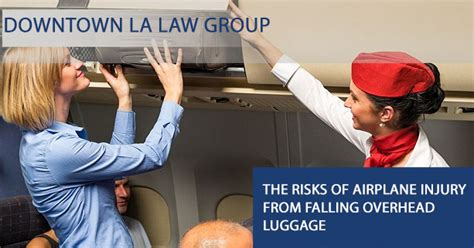
A passenger is suing United Airlines after sustaining injuries allegedly caused by a falling suitcase during boarding, prompting legal action that highlights the ongoing debate over passenger responsibility and airline liability for luggage-related incidents.
A California woman, identified as Deborah Altschuler, has filed a lawsuit against United Airlines, seeking unspecified damages for injuries she claims to have sustained when a fellow passenger’s bag fell on her head as she boarded a flight at San Francisco International Airport (SFO). The lawsuit, filed in the Superior Court of California, County of San Mateo, alleges negligence on the part of the airline and seeks to hold United accountable for the incident and its resulting consequences. According to court documents, the incident occurred on February 2, 2023, as Altschuler was boarding United flight 469, destined for Fort Lauderdale, Florida. As she walked down the aisle, another passenger struggled to lift their carry-on luggage into an overhead bin, causing it to fall directly onto Altschuler’s head.
The lawsuit claims that Altschuler suffered significant injuries, including head trauma, concussion, and ongoing pain and suffering. The complaint further asserts that United Airlines failed to provide a safe environment for its passengers, neglected to properly supervise the boarding process, and did not adequately assist passengers with stowing their luggage. Altschuler contends that these failures directly led to her injuries and subsequent damages.
The lawsuit brings to the forefront the issue of passenger safety during the boarding process, particularly concerning carry-on luggage. While airlines have policies regarding the size and weight of carry-on bags, enforcement can be inconsistent, leading to situations where passengers struggle with oversized or overweight luggage, potentially endangering themselves and others. The legal action also raises questions about the extent to which airlines are responsible for injuries caused by fellow passengers’ actions.
“Airlines have a duty to ensure the safety of their passengers from the moment they step onto the plane,” stated Altschuler’s attorney, in a press statement following the filing of the lawsuit. “In this case, United Airlines failed to uphold that duty, resulting in serious injuries to our client. We are confident that the court will find United liable for their negligence.”
United Airlines has not yet issued a formal response to the lawsuit. However, the airline is expected to argue that it is not responsible for the actions of individual passengers and that Altschuler’s injuries were the result of an unavoidable accident. The airline may also argue that Altschuler assumed the risk of injury when she chose to fly and that the incident was not foreseeable.
This case is not an isolated incident, as numerous reports and studies highlight the growing number of injuries related to carry-on luggage. The increasing prevalence of oversized bags and the competition for limited overhead bin space have created a hazardous environment for passengers during boarding and deplaning. The outcome of this lawsuit could have significant implications for the airline industry, potentially leading to stricter enforcement of carry-on policies, increased assistance for passengers with luggage, and greater awareness of the risks associated with overhead bins. The case will likely hinge on establishing the degree of negligence on United’s part and demonstrating a direct causal link between the airline’s alleged failures and Altschuler’s injuries. As the legal proceedings unfold, the aviation industry and passenger advocacy groups will be closely monitoring the case, as its outcome could set a precedent for future liability claims and influence airline safety protocols.
Background on Airline Liability and Passenger Safety
The issue of airline liability for passenger injuries is complex and often depends on the specific circumstances of the incident. Generally, airlines have a legal duty to exercise reasonable care to ensure the safety of their passengers. This duty extends to all aspects of the flight, including boarding, in-flight service, and deplaning.
The legal basis for airline liability can vary depending on the jurisdiction and the nature of the claim. In the United States, airlines can be held liable for negligence if they fail to exercise reasonable care and that failure causes injury to a passenger. To establish negligence, a plaintiff must prove that the airline had a duty of care, that it breached that duty, that the breach caused the injury, and that the plaintiff suffered damages as a result.
In the context of luggage-related injuries, airlines can be held liable if they fail to adequately supervise the boarding process, fail to assist passengers with stowing their luggage, or fail to enforce carry-on size and weight restrictions. However, airlines are not automatically liable for all injuries that occur on board. They may argue that the injury was caused by the actions of a fellow passenger, that the passenger assumed the risk of injury, or that the incident was not foreseeable.
The “reasonable care” standard is crucial in determining liability. Airlines are not required to guarantee the safety of their passengers, but they must take reasonable steps to prevent foreseeable harm. This can include providing adequate staffing, maintaining safe equipment, and implementing appropriate safety procedures.
Over the years, there have been numerous lawsuits against airlines for passenger injuries. Some cases involve turbulence, slip-and-fall accidents, or food poisoning. However, luggage-related injuries are also a common source of litigation. These cases often involve allegations of negligence in connection with overhead bin safety, carry-on weight limits, and passenger assistance.
The outcome of these lawsuits can vary widely. Some cases are settled out of court, while others go to trial. The amount of damages awarded can depend on the severity of the injury, the extent of the plaintiff’s medical expenses, and the degree of the airline’s negligence.
The Role of Carry-On Policies and Enforcement
Carry-on policies are designed to ensure the safety and comfort of passengers while also maximizing the use of available space in the aircraft cabin. These policies typically specify the maximum size and weight of carry-on bags and the number of items that passengers are allowed to bring on board.
Most airlines have similar carry-on size and weight restrictions, although there can be some variation. The standard carry-on size is typically around 22 x 14 x 9 inches, and the weight limit is usually between 15 and 25 pounds. These limits are intended to prevent passengers from bringing oversized or overweight bags that could pose a hazard to themselves and others.
However, the enforcement of carry-on policies can be inconsistent. Airlines often rely on gate agents and flight attendants to enforce the rules, but they may not always have the time or resources to do so effectively. As a result, many passengers are able to bring oversized or overweight bags on board without being challenged.
The lack of consistent enforcement can lead to a number of problems. Oversized bags can take up more space in the overhead bins, leaving less room for other passengers’ luggage. This can create a competitive environment, as passengers struggle to find space for their bags. Overweight bags can also be difficult to lift and stow, increasing the risk of injury.
In recent years, there has been growing concern about the impact of carry-on luggage on passenger safety. The increasing prevalence of oversized bags and the competition for overhead bin space have created a hazardous environment for passengers during boarding and deplaning. This has led to calls for stricter enforcement of carry-on policies and increased assistance for passengers with luggage.
Some airlines have started to implement stricter carry-on policies, such as charging fees for oversized bags or limiting the number of carry-on items that passengers can bring on board. Others have invested in new technology, such as automated baggage sizers, to help enforce the rules.
However, there is still a need for greater consistency in the enforcement of carry-on policies. Airlines need to ensure that their gate agents and flight attendants are properly trained and equipped to enforce the rules effectively. They also need to be willing to challenge passengers who attempt to bring oversized or overweight bags on board.
Legal Precedents and Similar Cases
The lawsuit filed by Deborah Altschuler is not the first of its kind. Over the years, there have been numerous cases involving injuries caused by falling luggage on airplanes. These cases often involve allegations of negligence on the part of the airline, the passenger who owned the luggage, or both.
One notable case involved a passenger who was struck in the head by a falling suitcase while boarding a flight. The passenger suffered a concussion and other injuries, and sued the airline for negligence. The court found that the airline had a duty to exercise reasonable care to ensure the safety of its passengers and that it had breached that duty by failing to adequately supervise the boarding process.
In another case, a passenger was injured when a fellow passenger’s bag fell out of an overhead bin during turbulence. The injured passenger sued both the airline and the passenger who owned the bag. The court found that the airline was not liable because the turbulence was an act of God and the airline had taken reasonable steps to ensure the safety of its passengers. However, the court found that the passenger who owned the bag was liable because they had failed to properly secure the bag in the overhead bin.
These cases illustrate the complexities of airline liability for luggage-related injuries. The outcome of each case depends on the specific facts and circumstances, as well as the applicable law. However, there are some general principles that can be derived from these cases.
First, airlines have a duty to exercise reasonable care to ensure the safety of their passengers. This duty extends to all aspects of the flight, including boarding, in-flight service, and deplaning.
Second, airlines can be held liable for negligence if they fail to exercise reasonable care and that failure causes injury to a passenger. To establish negligence, a plaintiff must prove that the airline had a duty of care, that it breached that duty, that the breach caused the injury, and that the plaintiff suffered damages as a result.
Third, airlines are not automatically liable for all injuries that occur on board. They may argue that the injury was caused by the actions of a fellow passenger, that the passenger assumed the risk of injury, or that the incident was not foreseeable.
Fourth, the “reasonable care” standard is crucial in determining liability. Airlines are not required to guarantee the safety of their passengers, but they must take reasonable steps to prevent foreseeable harm. This can include providing adequate staffing, maintaining safe equipment, and implementing appropriate safety procedures.
The Impact of Technology and Ergonomics
Technology and ergonomics play an increasingly important role in mitigating the risks associated with carry-on luggage. Airlines are exploring various technological solutions to improve baggage handling and enhance passenger safety.
One area of innovation is in the design of overhead bins. Some airlines are experimenting with new bin designs that are easier to open and close and that provide more space for luggage. These bins are often equipped with features such as spring-loaded doors and adjustable dividers, which can help to prevent bags from falling out.
Another area of innovation is in the development of automated baggage sizers. These devices use sensors and cameras to measure the size and weight of carry-on bags, ensuring that they comply with airline regulations. Automated baggage sizers can help to reduce the number of oversized or overweight bags that are allowed on board.
Ergonomics is also playing a role in reducing the risk of luggage-related injuries. Airlines are providing training to their employees on proper lifting techniques and the use of assistive devices. They are also encouraging passengers to use bags with wheels and telescoping handles, which can make it easier to transport luggage through the airport.
In addition, some airlines are offering services such as baggage valet, which allows passengers to check their carry-on bags at the gate and have them delivered to their final destination. This can help to reduce the amount of luggage that is brought on board the aircraft, making the boarding process safer and more efficient.
The implementation of these technologies and ergonomic practices can help to reduce the risk of luggage-related injuries and improve the overall passenger experience. However, it is important for airlines to invest in these solutions and to ensure that they are properly maintained and used.
Passenger Responsibilities and Awareness
While airlines have a responsibility to ensure passenger safety, passengers also have a role to play in preventing luggage-related injuries. Passengers should be aware of the risks associated with carry-on luggage and take steps to protect themselves and others.
One of the most important things that passengers can do is to pack their carry-on bags carefully. They should avoid overpacking and make sure that their bags are not too heavy or bulky. They should also secure any loose items inside the bag to prevent them from falling out.
Passengers should also be aware of the airline’s carry-on policies and comply with the size and weight restrictions. If they are unsure about the rules, they should ask a gate agent or flight attendant for assistance.
When boarding the aircraft, passengers should be careful when lifting their bags into the overhead bins. They should use proper lifting techniques and avoid straining their backs. If they are unable to lift their bag on their own, they should ask for assistance from a fellow passenger or a flight attendant.
Passengers should also be mindful of other passengers when stowing their luggage. They should avoid blocking the aisle or bumping into other people. They should also be careful when opening and closing the overhead bins to prevent bags from falling out.
In addition, passengers should report any safety concerns to the airline. If they see a bag that is oversized or overweight, or if they observe a passenger struggling to lift their bag, they should notify a gate agent or flight attendant.
By taking these steps, passengers can help to reduce the risk of luggage-related injuries and make the boarding process safer for everyone.
Future Trends and Potential Solutions
The issue of luggage-related injuries is likely to remain a concern for the airline industry in the years to come. As air travel becomes more common and passengers bring more carry-on luggage, the risks associated with overhead bins and boarding procedures will continue to grow.
To address these challenges, airlines and aviation authorities will need to explore new and innovative solutions. Some potential future trends and solutions include:
-
Smart Luggage: The development of “smart” luggage that can automatically weigh itself and alert passengers if it exceeds the airline’s weight restrictions. This technology could help to reduce the number of overweight bags that are brought on board.
-
Advanced Overhead Bin Systems: The design of more advanced overhead bin systems that are easier to use and provide better security. These systems could include features such as automated locking mechanisms and sensors that detect when a bag is not properly stowed.
-
Dynamic Pricing for Carry-On Bags: The implementation of dynamic pricing for carry-on bags, where passengers are charged a fee based on the size and weight of their bags. This could incentivize passengers to pack lighter and reduce the amount of luggage that is brought on board.
-
Expanded Baggage Valet Services: The expansion of baggage valet services, which allow passengers to check their carry-on bags at the gate and have them delivered to their final destination. This could help to reduce the amount of luggage that is brought on board the aircraft and streamline the boarding process.
-
Improved Passenger Education: The development of more comprehensive passenger education programs that teach passengers about the risks associated with carry-on luggage and the importance of following airline safety policies.
-
Enhanced Crew Training: Further and continued enhanced training programs for flight attendants and ground staff on how to assist passengers with their luggage and identify potential hazards. This includes training on ergonomic lifting techniques and conflict resolution skills.
-
Regulation of Carry-on Weight and Dimensions: Stricter enforcement, monitoring, and possible adjustments to standard carry-on size and weight regulations across all airlines to standardize and prevent abuse of the system.
-
AI-Powered Luggage Monitoring: Utilizing artificial intelligence to monitor passenger luggage in real-time, identifying bags that are oversized, overweight, or improperly stowed and alerting airline staff.
By investing in these technologies and implementing these solutions, airlines and aviation authorities can help to reduce the risk of luggage-related injuries and improve the overall passenger experience. The Altschuler case serves as a reminder of the importance of passenger safety and the need for continuous improvement in airline safety protocols.
FAQ on the United Airlines Luggage Lawsuit
Here are five frequently asked questions related to the news about the lawsuit against United Airlines:
1. What exactly happened in the incident leading to the lawsuit against United Airlines?
- On February 2, 2023, Deborah Altschuler was boarding United Airlines flight 469 at San Francisco International Airport (SFO) when another passenger struggled to place their carry-on luggage in an overhead bin. The bag fell and struck Altschuler on the head, allegedly causing injuries such as head trauma and a concussion. She is now suing United Airlines for negligence, claiming they failed to provide a safe environment for passengers and adequately supervise the boarding process.
2. What are the main arguments in Deborah Altschuler’s lawsuit against United Airlines?
- Altschuler’s lawsuit primarily argues that United Airlines was negligent in several ways: 1) Failing to provide a safe boarding environment for passengers, 2) Neglecting to adequately supervise the boarding process and assist passengers with their luggage, and 3) Not enforcing carry-on luggage policies effectively. Altschuler claims these failures directly resulted in her injuries and subsequent pain and suffering. She is seeking unspecified damages to cover medical expenses and other related costs.
3. How might United Airlines defend itself against the lawsuit?
- United Airlines is likely to argue several points in its defense. First, they may contend that they are not responsible for the actions of individual passengers and that the incident was an unavoidable accident. Second, they could argue that Altschuler assumed some risk of injury by choosing to fly. Third, United might claim that the incident was not foreseeable, meaning they could not have reasonably predicted or prevented the bag from falling. Finally, they may assert that they met the standard of “reasonable care” in ensuring passenger safety.
4. What potential impact could this lawsuit have on airline policies and passenger safety?
- The outcome of this lawsuit could have several significant impacts on the airline industry. A ruling in favor of Altschuler could set a precedent for future liability claims related to luggage injuries. This could lead airlines to implement stricter enforcement of carry-on luggage policies, provide increased assistance to passengers with stowing luggage, and invest in improved overhead bin designs and technology. It may also increase awareness of the risks associated with overhead bins, promoting greater caution among passengers.
5. What are some examples of existing airline policies and practices related to carry-on luggage, and how effective are they?
- Most airlines have policies that specify the maximum size and weight of carry-on bags (typically around 22 x 14 x 9 inches and between 15-25 pounds). Some airlines also limit the number of carry-on items allowed per passenger. However, enforcement of these policies is often inconsistent. Gate agents and flight attendants are responsible for enforcing the rules, but they may not always have the resources or time to do so effectively. This inconsistency can lead to oversized or overweight bags being allowed on board, creating a hazardous environment during boarding and deplaning, and leading to injuries similar to those claimed by Altschuler. Stricter, more consistent enforcement is often called for to improve passenger safety.









